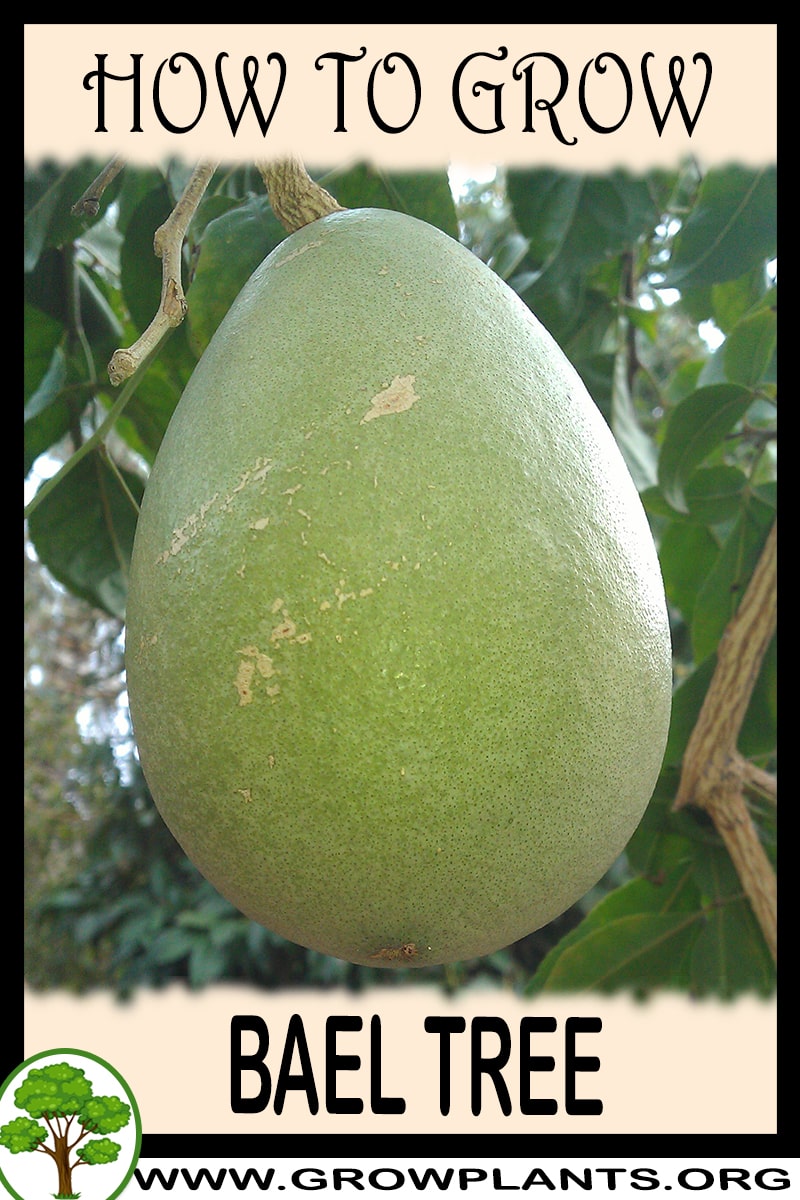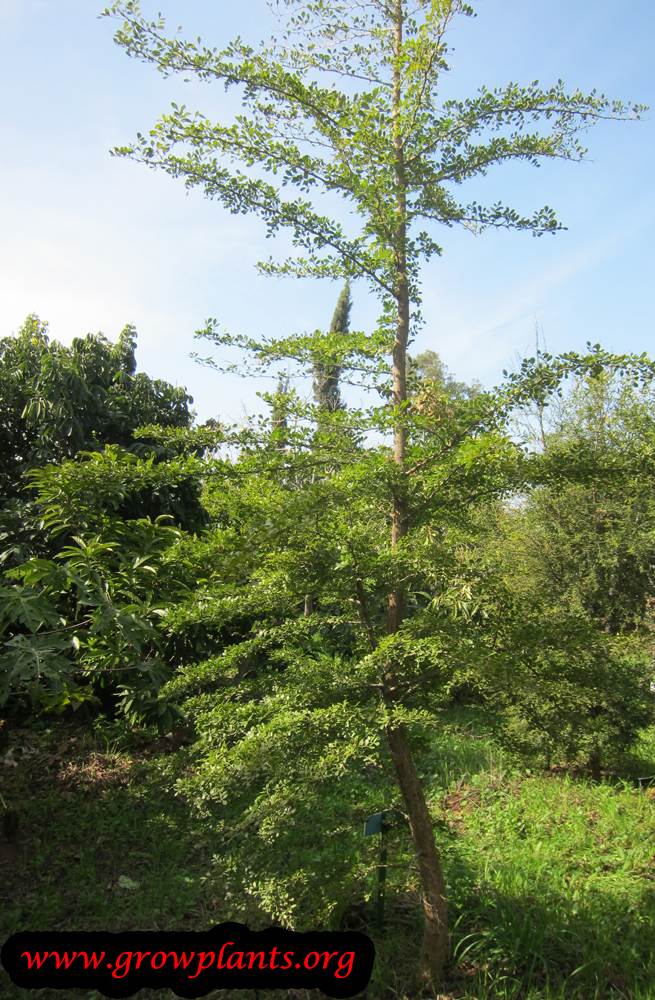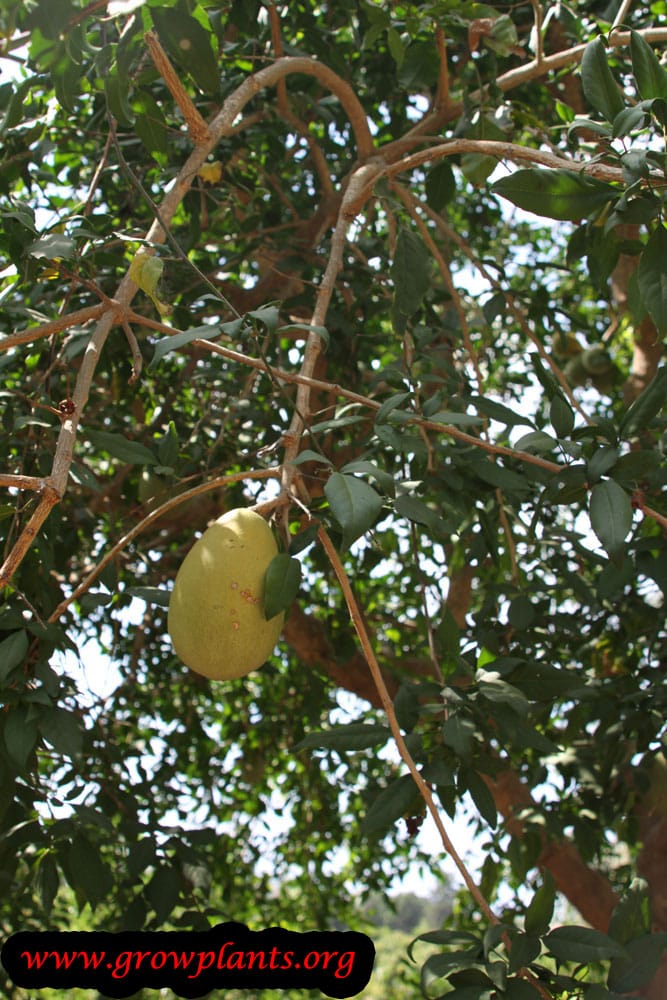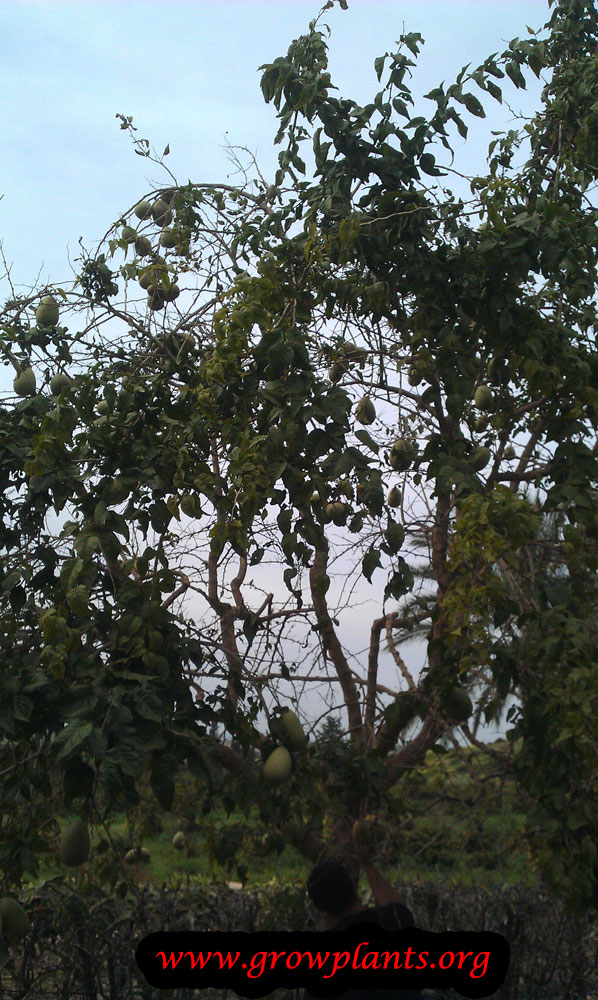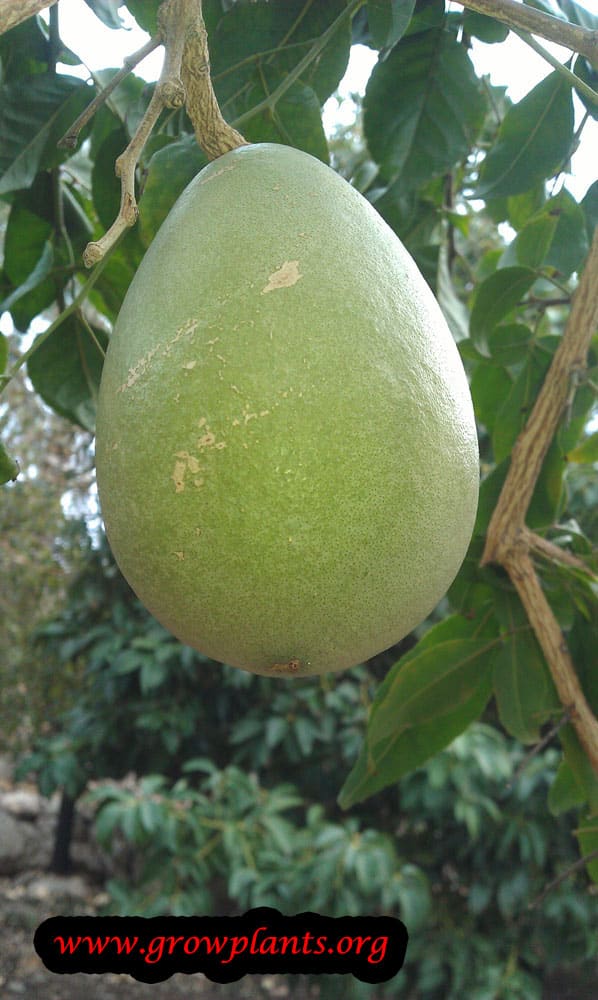
Bael grow and care – tree of the genus Aegle also known as Bael fruit or Aegle marmelos, Bael perennial evergreen to semi deciduous plant also used as ornamental plant, shade tree and use as medical plant, possible to grow it as bonsai plant, after few years the tree can be drought tolerant, can grow in mediterranean, desert, subtropical, temperate or tropic climate and growing in hardiness zone 9+.
Leaves color green in elliptic shape, the leaves can be edible when young.
Flower color yellow, the flowers small and have 4 petals.
Bael fruits
Fruit color light green to brown in egg, round or pear shape the taste is sweet sour and the size it’s 7-15 cm.
Alternative name: Bili tree, Aegle marmelos, Bengal quince, Stone apple, Wood apple, Indian bael
Bilva tree for sale – Seeds or Plants to Buy
How to grow Bael tree – growing and care:
Well-drained soil, when tree young need to fertilize four times a year in tropical in colder area three times spring, early summer and end of the summer
What is the best way to start growing?
Plant / Seedling / Seed / Air layering – better to start in this method because it will produce fruits faster than seeds
Is it necessary to graft or use vegetative reproduction?
No, if want better fruits need to graft
Difficulties or problems when growing
Very slow growing tree
Planting season:
Spring, to autumn, in hardiness zone 9-10a in spring, 10b-11 spring to autumn and in hardiness zone 12+ all year
Pests and diseases:
Aphids
Pruning season:
Winter
How to prune:
Just for design
Size of the plant?
5-10 m, 15-30 feet
Growth speed in optimal condition:
Slow growing, it’s takes it few years until it started to grow faster
Water requirement:
Small amount of water / Average amount of water
Light conditions in optimal condition for growing:
Full Sun / Half Shade (when the tree young better full sun)
Is it possible to grow indoor as houseplant?
No
Growing is also possible in a planter /flowerpot / containers
No, only possible as bonsai
Blooming information
Bloom season:
Spring
General information about the flower
Yellow small flowers and have 4 petals.
Edible Fruit
Harvest fruit season:
Autumn to winter
Fruits pests or diseases:
Birds
What can be done with big quantities of Bael fruits?
Juice, dry fruit, toffee, eat raw
Work requirements on the fruit:
Just collect the fruit
How long does it take to bear fruit?
5-10 years
Edible leaves
Leaves harvesting season:
Spring / Summer
How to harvest the leaves?
Young leaves, better to start to harvest after the plant start to bear fruit at least few years
Information about leaves:
Leaves oval and when young tender and edible after this possible to eat but structure less good
Uses of Indian Bael leaves:
Cooked
How to grow Bilva tree from seed
Sowing requirement:
Rich soil with organic matter, well-drained soil
Saving seeds until sowing:
Dark dry location in room temperature
Sowing season:
Spring to summer
Planting spacing:
Better in separate pots
Depth of Sowing:
2-3cm (~1 inches) from the top of the seeds
Conditions for seeds germinate:
Moist soil,
Watering requires for Seeds:
Average amount of water and don’t let them dry
Germination time:
1-3 months
Condition of seedling:
Water them regularly and protect them from winds
Scientific name:
Aegle marmelos
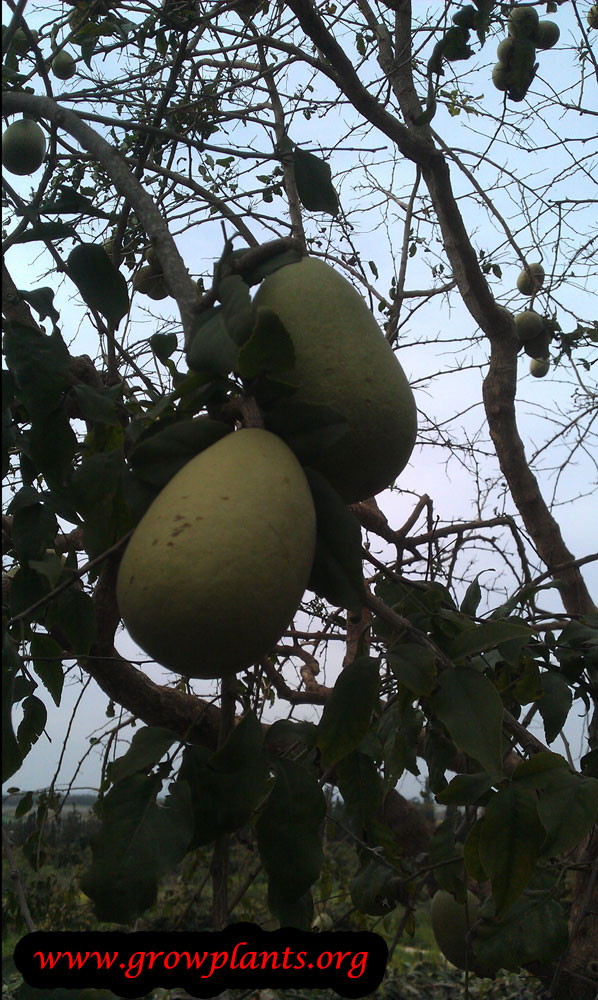

Categories
| Blooming Seasons |
|
|---|---|
| Edible Parts |
|
| Culinary uses |
|
| Flower colors |
|
| Climate |
|
| Harvest Season |
|
| Ornamental parts |
|
| Plant growing speed |
|
| Plant life-form |
|
| Plant Uses |
|
| Planting Season |
|
| Plants sun exposure |
|
| Watering plants |
|
| Hardiness zone |
|


